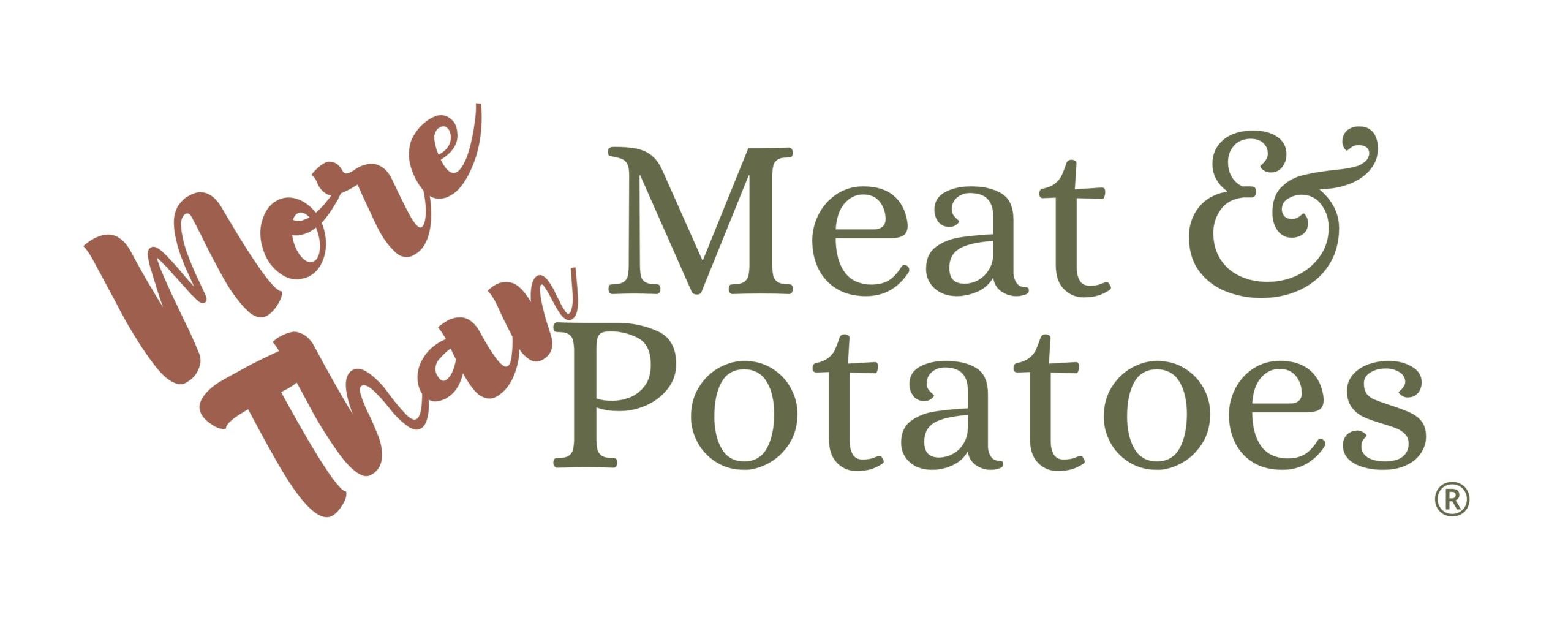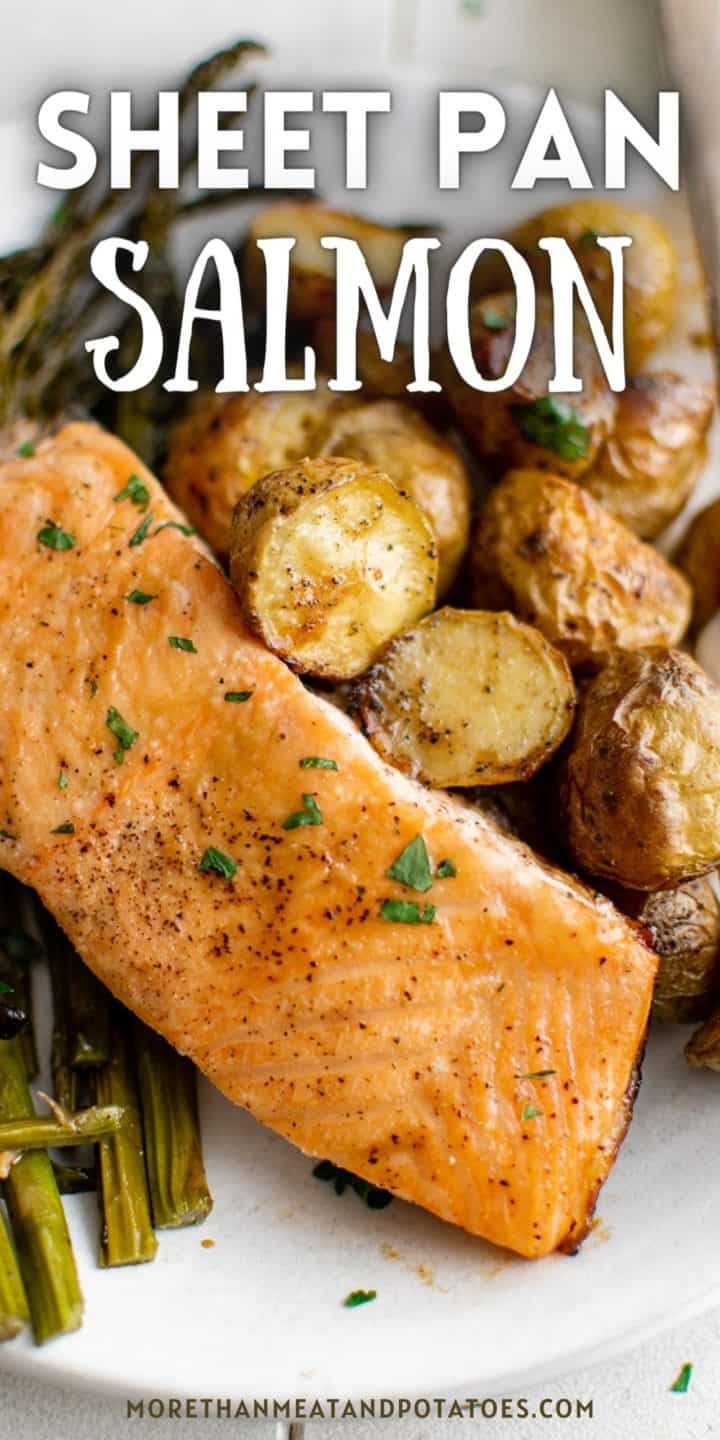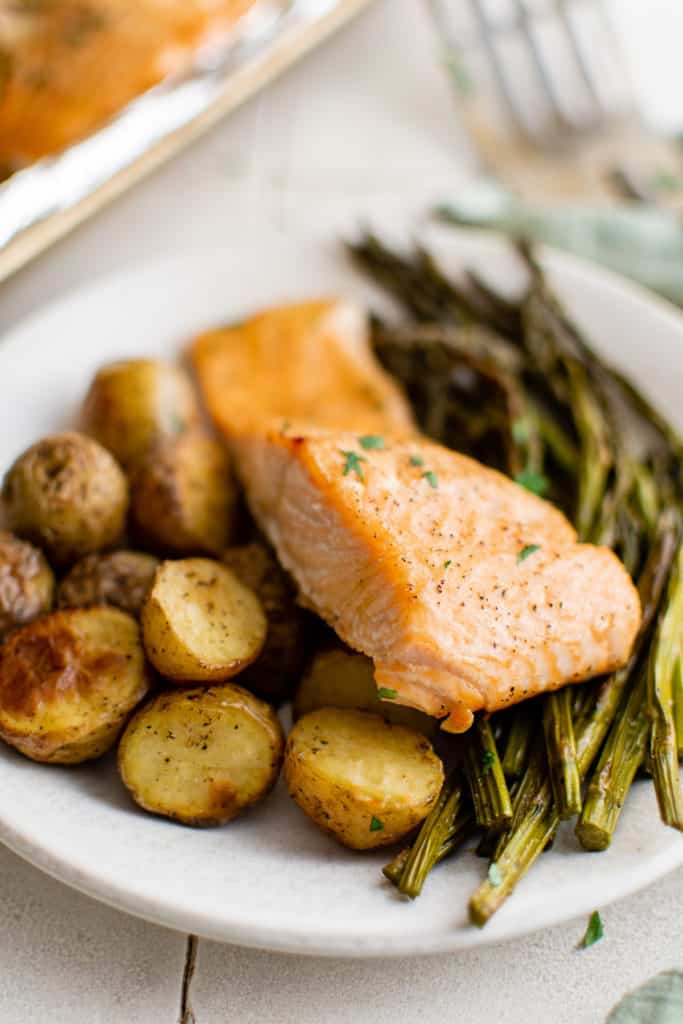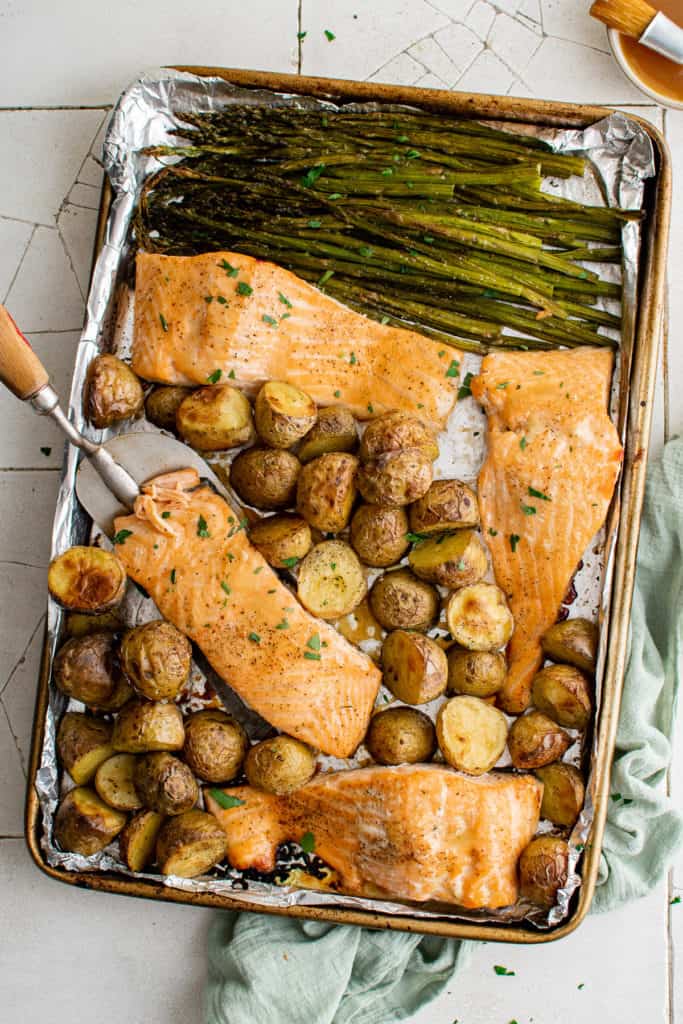Sheet Pan Salmon
Sheet Pan Salmon is a quick and easy way to cook salmon perfectly when you don’t have a lot of time. Salmon fillets are cooked on a sheet pan in a homemade marinade along with roasted potatoes for an easy sheet pan dinner that is great for busy weeknights!
This sheet pan salmon dinner is a similar concept to this sheet pan sausage and veggies. A couple of our other one pot dishes are One Pot Jambalaya Pasta and One Pot Mushroom Pesto Pasta. Love salmon? Try our easy to make Salmon Croquettes or Maple Dijon Salmon!
How To Make Sheet Pan Salmon
- Prepare for baking: Preheat the oven to 400°F, and line a large baking sheet with non-stick aluminum foil, parchment paper, or a silicone baking mat.
- Season the potatoes: Cut the baby potatoes in half, then arrange them on the baking sheet. Drizzle with olive oil and half of the salt and pepper mixture. Toss to evenly combine.
- Pre-Bake the Potatoes: Bake the potatoes for 15 minutes, then remove and add the asparagus to one half of the baking sheet. Add the rest of the olive oil, salt, and pepper onto the asparagus and bake for an additional 15 minutes.
- Assemble the marinade: In the meantime, stir honey, mustard, and balsamic vinegar together in a small bowl until smooth.
- Add the salmon: Remove the pan from the oven after the asparagus cooks, and adjust the oven to broil. Make room for the salmon by pushing the other vegetables around. Add the salmon to the sheet pan.
- Bake the salmon: Brush the top of each salmon fillet with the marinade, then bake in the oven for 7-10 minutes or until the salmon is fully cooked through at an internal temperature of 145°F. Plate the ingredients while hot and garnish with fresh parsley.
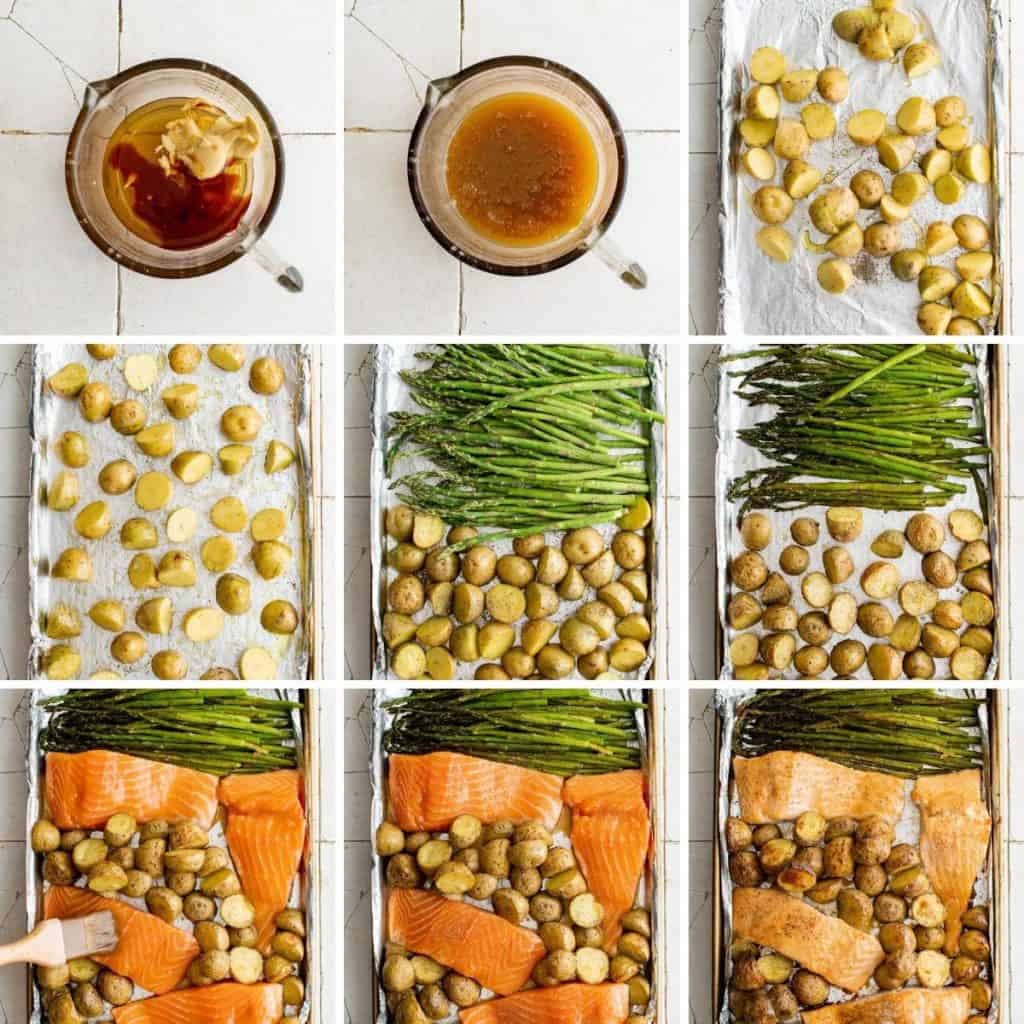
Recipe Tips
- You can use any kind of potatoes for sheet pan salmon, but we recommend baby potatoes because they cook evenly and quickly.
- The sheet pan salmon recipe can be easily doubled or tripled to serve more people. You can fill up as many sheet pans as you need.
- When buying salmon, if possible look for the word “wild” on the label. This means that the salmon was caught in its natural habitat instead of being farmed.
- If you don’t have a broiler, you can bake sheet pan salmon at 400°F for 18-20 minutes.
Sheet Pan Salmon Variations
- Use different potatoes: While baby potatoes are the best for sheet pan recipes you can try using other types of potatoes such as Yukon gold or red potatoes.
- Change up the vegetables: If asparagus is not in season, you can use broccoli, green beans, or any other vegetable that you prefer.
- Use different types of seafood: You can also use a different type of fish for this recipe, such as cod, tilapia, or shrimp.
u003cstrongu003eCan you use frozen salmon to make sheet pan salmon?u003c/strongu003e
No, the texture of the cooked fish will be very different. I don’t recommend using frozen salmon for this recipe because it just doesn’t work as well since it’s already cooked before being put on the sheet pan. However, if you don’t mind a firmer texture, you could try cooking it for a little bit longer.
u003cstrongu003eHow do you know when salmon is cooked through?u003c/strongu003e
The best way to check for doneness is to use a thermometer. The salmon should reach an internal temperature of 145°F. You can also cut into the thickest part of the fillet and look for a slightly pink center. If it’s still translucent, cook it for a few more minutes.
Can you use frozen salmon to make sheet pan salmon?
No, the texture of the cooked fish will be very different. I don’t recommend using frozen salmon for this recipe because it just doesn’t work as well since it’s already cooked before being put on the sheet pan. However, if you don’t mind a firmer texture, you could try cooking it for a little bit longer.
How do you know when salmon is cooked through?
The best way to check for doneness is to use a thermometer. The salmon should reach an internal temperature of 145°F. You can also cut into the thickest part of the fillet and look for a slightly pink center. If it’s still translucent, cook it for a few more minutes.
Storing and Freezing Sheet Pan Salmon
Storing: Store any leftover salmon for up to 3 days in a sealed container with as much air removed as possible.
Freezing: Place sheet pan salmon in a large sealable bag or container, removing as much air as possible. Then place in the freezer for up to 3 months. When ready to use, thaw overnight in the fridge and heat in the oven at 350°F for 20-30 minutes or until completely thawed and heated through.
More Seafood Recipes
- Mushroom Shrimp Pasta
- Baked Cod With Panko
- Shrimp Curry
- Baked Flounder with Lemon and Garlic Butter
- Shrimp Diablo
- Teriyaki Salmon
- Chilean Sea Bass
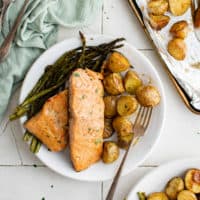
Ingredients
For the Potatoes
- 1 pound baby potatoes, cut in half
- 1 tablespoon olive oil
- ½ teaspoon(s) salt
- ½ teaspoon(s) ground black pepper
For the Asparagus
- 1 pound asparagus, fresh, thick ends trimmed
- ½ tablespoon salt
- ½ tablespoon ground black pepper
For the Honey Mustard Glaze
- ¼ cup honey
- 1 tablespoon Dijon mustard
- 2 teaspoon(s) balsamic vinegar
- 4 salmon fillets
Instructions
- Preheat the oven to 400°F, and line a large baking sheet with non-stick aluminum foil or parchment paper.
- Arrange the potatoes on the baking sheet. Then drizzle with 1 tablespoon of olive oil and sprinkle with half of the salt and pepper. Toss to combine.1 pound baby potatoes1 tablespoon olive oil½ teaspoon(s) salt½ teaspoon(s) ground black pepper
- Bake for 15 minutes, then add the asparagus to one half of the baking sheet. Drizzle the remaining oil on top along with the remaining salt and pepper. Toss to combine. Bake for 15 additional minutes.1 pound asparagus½ tablespoon salt½ tablespoon ground black pepper
- In the meantime, stir the honey, mustard and balsamic together in a small bowl until combined.¼ cup honey1 tablespoon Dijon mustard2 teaspoon(s) balsamic vinegar
- Remove the pan from the oven and adjust the oven to broil.
- Push the veggies around to make space for the salmon, and place the salmon on the baking sheet evenly spaced.4 salmon fillets
- Brush the honey mixture on the fillets then broil for 7-10 minutes depending on the thickness of the fillets.
- Serve with freshly chopped parsley if desired.
- See post for storage options.
